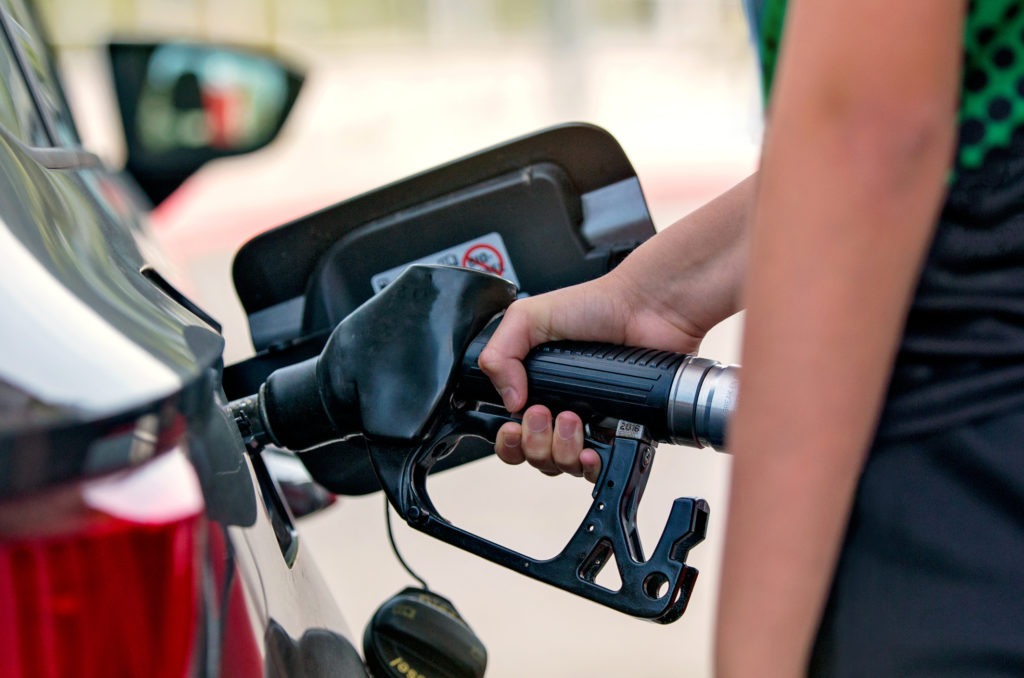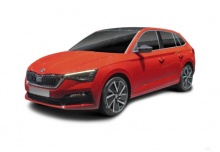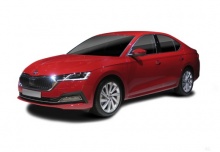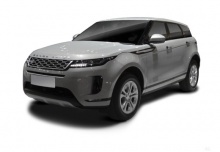How do diesel vehicles deliver against the key metric of TCO?
16 July 2020

16 July 2020
The Total Cost of Ownership (TCO) is a metric that automotive manufacturers use to judge their various model options against competitors, in an effort to increase vehicle appeal to the consumer.
With the industry landscape changing, the diesel market has suffered the most in recent years. Diesel is declining in popularity in the B-segment, and some OEMs have retreated. Sales have fallen dramatically across Europe following the Dieselgate scandal and heightened awareness of nitrogen oxide (NOx) emissions. However, many carmakers are sticking with diesel. The latest technologies reduce the levels of NOx emitted, with reduced CO2 emissions, low fuel consumption and more durable and robust engines continuing strengths of the diesel.
In the second of four articles, Autovista Group celebrates the importance of TCO with a look at the nominees in the diesel category for the TCO Awards 2020.
Renault Clio V 1.5 Blue dCi 85
 The Clio’s diesel variant was only recently launched and is priced at slightly below €20,000. You will get 85hp and 3.8l/100km in New European Drive Cycle (NEDC) calculations. The appeal of this long-established B-segment vehicle lies in its LED headlights and cruise control, which are part of the standard equipment. Timeliness of the model helps RV performance and so too does the practical trunk, due to the new platform.
Renault Captur II 1.5 Blue dCi 115
The Clio’s diesel variant was only recently launched and is priced at slightly below €20,000. You will get 85hp and 3.8l/100km in New European Drive Cycle (NEDC) calculations. The appeal of this long-established B-segment vehicle lies in its LED headlights and cruise control, which are part of the standard equipment. Timeliness of the model helps RV performance and so too does the practical trunk, due to the new platform.
Renault Captur II 1.5 Blue dCi 115
 The Blue dCi 115 powertrain offers 115hp and is available in the Captur as an alternative to the petrol and LPG models. You pay €26,000 for the diesel, compared to €21,000 for the petrol variant. However, the Blue dCi 115 comes with the higher trim, including the latest EASY LINK infotainment system. Consumption is around 4.2l/100km, according to NEDC testing.
Dacia Duster Blue dCi 115
The Blue dCi 115 powertrain offers 115hp and is available in the Captur as an alternative to the petrol and LPG models. You pay €26,000 for the diesel, compared to €21,000 for the petrol variant. However, the Blue dCi 115 comes with the higher trim, including the latest EASY LINK infotainment system. Consumption is around 4.2l/100km, according to NEDC testing.
Dacia Duster Blue dCi 115
 The Duster offers more variety in powertrain choices than many other contenders, which may be a bit surprising to some. For example, the dCi 115 diesel engine is available as 2WD and 4WD (as is the petrol variant). The Blue dCi 115 in the 2WD version starts at €16,000 and offers 116hp with a fuel consumption of 4.1l/100km (NEDC) and 128 g CO2 emissions according to the Worldwide Harmonised Light-Vehicle Testing Procedure (WLTP). You do not pay a premium over the petrol engine, which also starts at €16,000 (but has 130hp). This makes the diesel an attractive choice.
Skoda Scala 1.6 TDI
The Duster offers more variety in powertrain choices than many other contenders, which may be a bit surprising to some. For example, the dCi 115 diesel engine is available as 2WD and 4WD (as is the petrol variant). The Blue dCi 115 in the 2WD version starts at €16,000 and offers 116hp with a fuel consumption of 4.1l/100km (NEDC) and 128 g CO2 emissions according to the Worldwide Harmonised Light-Vehicle Testing Procedure (WLTP). You do not pay a premium over the petrol engine, which also starts at €16,000 (but has 130hp). This makes the diesel an attractive choice.
Skoda Scala 1.6 TDI
 The Scala, typical for Skoda, offers a great amount of interior roominess, a unique selling point in this class. Launched in May 2019, it replaced the Rapid. Several innovative features give credibility to the company’s claim ′simply clever’, such as the ice scraper in the fuel tank cover. Materials in the interior are simple, but in line with the segment. The fit and finish is strong. A virtual cockpit is an optional feature and it has a solid set of assistance systems. LED is standard but there is full-LED as an option, with further LED features.
The 1.6 diesel with a manual transmission starts at €22,000 for 115hp and a fuel consumption of 4.2l/100km (NEDC) and 127 g CO2 emissions (WLTP). This does not include alloy wheels, which are priced at around €500. The petrol 115hp alternative is €3,000 cheaper.
Skoda New Octavia 2.0 TDI
The Scala, typical for Skoda, offers a great amount of interior roominess, a unique selling point in this class. Launched in May 2019, it replaced the Rapid. Several innovative features give credibility to the company’s claim ′simply clever’, such as the ice scraper in the fuel tank cover. Materials in the interior are simple, but in line with the segment. The fit and finish is strong. A virtual cockpit is an optional feature and it has a solid set of assistance systems. LED is standard but there is full-LED as an option, with further LED features.
The 1.6 diesel with a manual transmission starts at €22,000 for 115hp and a fuel consumption of 4.2l/100km (NEDC) and 127 g CO2 emissions (WLTP). This does not include alloy wheels, which are priced at around €500. The petrol 115hp alternative is €3,000 cheaper.
Skoda New Octavia 2.0 TDI
 The Skoda Octavia is brand new and replaces a very successful predecessor. The 2.0 TDI offers 115hp and the sedan starts at €28,000. The difference between the estate and the saloon is only around €600. It has grown only slightly vs its predecessor. ′Simply clever’ features and gadgets are available, e.g. the sleep package that stabilises your head on the rear seat, umbrella storage and other smart storage solutions.
Fuel consumption is around 3.5l/100km (NEDC), with 117g CO2 emissions (WLTP). This continues to be a strong contender when it comes to TCO performance, in part due to a solid RV performance. Skoda’s strategy of building the car a bit larger than is typical for the segment means the Octavia represents additional value for money.
Range Rover Evoque 2.0l D
The Skoda Octavia is brand new and replaces a very successful predecessor. The 2.0 TDI offers 115hp and the sedan starts at €28,000. The difference between the estate and the saloon is only around €600. It has grown only slightly vs its predecessor. ′Simply clever’ features and gadgets are available, e.g. the sleep package that stabilises your head on the rear seat, umbrella storage and other smart storage solutions.
Fuel consumption is around 3.5l/100km (NEDC), with 117g CO2 emissions (WLTP). This continues to be a strong contender when it comes to TCO performance, in part due to a solid RV performance. Skoda’s strategy of building the car a bit larger than is typical for the segment means the Octavia represents additional value for money.
Range Rover Evoque 2.0l D
 The first-generation Evoque, one of the first crossovers, sold more than 800,000 units, which would have surprised many at the time of its launch. Many have since copied Range Rover’s approach and launched crossovers. This generation of the premium SUV was launched at the beginning of 2019 and is an elegant and luxurious choice. The interior has been tidied up, and while the length remains the same, it is higher and wider than its predecessor, adding more space in the interior.
It is not surprising that the exterior conserves the iconic design cues of the previous model. The entry-level diesel starts at €38,000 but does not offer 48-volt MHEV functionality or all-wheel drive (AWD). For €43,000, you will be able to get the Evoque with 150hp, AWD and fuel consumption of 5.6l/100km (NEDC). AWD switches into two-wheel-drive in certain conditions to save fuel. The petrol variants are generally more expensive than the diesel versions (but offer higher performance levels), so that will help to attract buyers to the diesel engines and keep CO2 emission levels low for the brand.
Citroën C5 Aircross Diesel 130hp
The first-generation Evoque, one of the first crossovers, sold more than 800,000 units, which would have surprised many at the time of its launch. Many have since copied Range Rover’s approach and launched crossovers. This generation of the premium SUV was launched at the beginning of 2019 and is an elegant and luxurious choice. The interior has been tidied up, and while the length remains the same, it is higher and wider than its predecessor, adding more space in the interior.
It is not surprising that the exterior conserves the iconic design cues of the previous model. The entry-level diesel starts at €38,000 but does not offer 48-volt MHEV functionality or all-wheel drive (AWD). For €43,000, you will be able to get the Evoque with 150hp, AWD and fuel consumption of 5.6l/100km (NEDC). AWD switches into two-wheel-drive in certain conditions to save fuel. The petrol variants are generally more expensive than the diesel versions (but offer higher performance levels), so that will help to attract buyers to the diesel engines and keep CO2 emission levels low for the brand.
Citroën C5 Aircross Diesel 130hp
 The 130hp diesel performs efficiently at 3.9l/100km (NEDC). This is low but not surprising as PSA has a reputation for developing efficient diesel engines. The price starts at €28,000. An eight-gear automatic transmission is optional and up to 20 driver-assistance systems are on offer. The ′Advanced Comfort Suspension’ features excellent absorption qualities, but that is not tied to the diesel. The uplift for the diesel with 130hp vs the petrol with 130hp is €3,000 (LIVE trim).
Peugeot 2008 1.5 BlueHDi 100
The 130hp diesel performs efficiently at 3.9l/100km (NEDC). This is low but not surprising as PSA has a reputation for developing efficient diesel engines. The price starts at €28,000. An eight-gear automatic transmission is optional and up to 20 driver-assistance systems are on offer. The ′Advanced Comfort Suspension’ features excellent absorption qualities, but that is not tied to the diesel. The uplift for the diesel with 130hp vs the petrol with 130hp is €3,000 (LIVE trim).
Peugeot 2008 1.5 BlueHDi 100
 Peugeot’s 2008 launched in January 2020 and is now a proper SUV. It has substantially grown in length and width. Design cues from the 3008 are picked up as well as the vertical daytime running lights (DRLs) from the 208. AWD is not offered, but there is a battery-electric version. LED is standard, as is Apple CarPlay and Android Auto within the infotainment system. Active lane assist, front-collision warning, fatigue detection and simple speed control are also included as standard. There are more optional features along with a full line-up of ADAS. The diesel delivers 100hp with fuel consumption of 3.6l/100km (NEDC). You will have to invest at least €24,000 for the diesel, around €2,500 more than for the comparable petrol variant.
The first article in this series, covering nominees in the battery-electric vehicle category, can be found here. The next article in the series will look at the petrol market.
Peugeot’s 2008 launched in January 2020 and is now a proper SUV. It has substantially grown in length and width. Design cues from the 3008 are picked up as well as the vertical daytime running lights (DRLs) from the 208. AWD is not offered, but there is a battery-electric version. LED is standard, as is Apple CarPlay and Android Auto within the infotainment system. Active lane assist, front-collision warning, fatigue detection and simple speed control are also included as standard. There are more optional features along with a full line-up of ADAS. The diesel delivers 100hp with fuel consumption of 3.6l/100km (NEDC). You will have to invest at least €24,000 for the diesel, around €2,500 more than for the comparable petrol variant.
The first article in this series, covering nominees in the battery-electric vehicle category, can be found here. The next article in the series will look at the petrol market.
 The Clio’s diesel variant was only recently launched and is priced at slightly below €20,000. You will get 85hp and 3.8l/100km in New European Drive Cycle (NEDC) calculations. The appeal of this long-established B-segment vehicle lies in its LED headlights and cruise control, which are part of the standard equipment. Timeliness of the model helps RV performance and so too does the practical trunk, due to the new platform.
Renault Captur II 1.5 Blue dCi 115
The Clio’s diesel variant was only recently launched and is priced at slightly below €20,000. You will get 85hp and 3.8l/100km in New European Drive Cycle (NEDC) calculations. The appeal of this long-established B-segment vehicle lies in its LED headlights and cruise control, which are part of the standard equipment. Timeliness of the model helps RV performance and so too does the practical trunk, due to the new platform.
Renault Captur II 1.5 Blue dCi 115
 The Blue dCi 115 powertrain offers 115hp and is available in the Captur as an alternative to the petrol and LPG models. You pay €26,000 for the diesel, compared to €21,000 for the petrol variant. However, the Blue dCi 115 comes with the higher trim, including the latest EASY LINK infotainment system. Consumption is around 4.2l/100km, according to NEDC testing.
Dacia Duster Blue dCi 115
The Blue dCi 115 powertrain offers 115hp and is available in the Captur as an alternative to the petrol and LPG models. You pay €26,000 for the diesel, compared to €21,000 for the petrol variant. However, the Blue dCi 115 comes with the higher trim, including the latest EASY LINK infotainment system. Consumption is around 4.2l/100km, according to NEDC testing.
Dacia Duster Blue dCi 115
 The Duster offers more variety in powertrain choices than many other contenders, which may be a bit surprising to some. For example, the dCi 115 diesel engine is available as 2WD and 4WD (as is the petrol variant). The Blue dCi 115 in the 2WD version starts at €16,000 and offers 116hp with a fuel consumption of 4.1l/100km (NEDC) and 128 g CO2 emissions according to the Worldwide Harmonised Light-Vehicle Testing Procedure (WLTP). You do not pay a premium over the petrol engine, which also starts at €16,000 (but has 130hp). This makes the diesel an attractive choice.
Skoda Scala 1.6 TDI
The Duster offers more variety in powertrain choices than many other contenders, which may be a bit surprising to some. For example, the dCi 115 diesel engine is available as 2WD and 4WD (as is the petrol variant). The Blue dCi 115 in the 2WD version starts at €16,000 and offers 116hp with a fuel consumption of 4.1l/100km (NEDC) and 128 g CO2 emissions according to the Worldwide Harmonised Light-Vehicle Testing Procedure (WLTP). You do not pay a premium over the petrol engine, which also starts at €16,000 (but has 130hp). This makes the diesel an attractive choice.
Skoda Scala 1.6 TDI
 The Scala, typical for Skoda, offers a great amount of interior roominess, a unique selling point in this class. Launched in May 2019, it replaced the Rapid. Several innovative features give credibility to the company’s claim ′simply clever’, such as the ice scraper in the fuel tank cover. Materials in the interior are simple, but in line with the segment. The fit and finish is strong. A virtual cockpit is an optional feature and it has a solid set of assistance systems. LED is standard but there is full-LED as an option, with further LED features.
The 1.6 diesel with a manual transmission starts at €22,000 for 115hp and a fuel consumption of 4.2l/100km (NEDC) and 127 g CO2 emissions (WLTP). This does not include alloy wheels, which are priced at around €500. The petrol 115hp alternative is €3,000 cheaper.
Skoda New Octavia 2.0 TDI
The Scala, typical for Skoda, offers a great amount of interior roominess, a unique selling point in this class. Launched in May 2019, it replaced the Rapid. Several innovative features give credibility to the company’s claim ′simply clever’, such as the ice scraper in the fuel tank cover. Materials in the interior are simple, but in line with the segment. The fit and finish is strong. A virtual cockpit is an optional feature and it has a solid set of assistance systems. LED is standard but there is full-LED as an option, with further LED features.
The 1.6 diesel with a manual transmission starts at €22,000 for 115hp and a fuel consumption of 4.2l/100km (NEDC) and 127 g CO2 emissions (WLTP). This does not include alloy wheels, which are priced at around €500. The petrol 115hp alternative is €3,000 cheaper.
Skoda New Octavia 2.0 TDI
 The Skoda Octavia is brand new and replaces a very successful predecessor. The 2.0 TDI offers 115hp and the sedan starts at €28,000. The difference between the estate and the saloon is only around €600. It has grown only slightly vs its predecessor. ′Simply clever’ features and gadgets are available, e.g. the sleep package that stabilises your head on the rear seat, umbrella storage and other smart storage solutions.
Fuel consumption is around 3.5l/100km (NEDC), with 117g CO2 emissions (WLTP). This continues to be a strong contender when it comes to TCO performance, in part due to a solid RV performance. Skoda’s strategy of building the car a bit larger than is typical for the segment means the Octavia represents additional value for money.
Range Rover Evoque 2.0l D
The Skoda Octavia is brand new and replaces a very successful predecessor. The 2.0 TDI offers 115hp and the sedan starts at €28,000. The difference between the estate and the saloon is only around €600. It has grown only slightly vs its predecessor. ′Simply clever’ features and gadgets are available, e.g. the sleep package that stabilises your head on the rear seat, umbrella storage and other smart storage solutions.
Fuel consumption is around 3.5l/100km (NEDC), with 117g CO2 emissions (WLTP). This continues to be a strong contender when it comes to TCO performance, in part due to a solid RV performance. Skoda’s strategy of building the car a bit larger than is typical for the segment means the Octavia represents additional value for money.
Range Rover Evoque 2.0l D
 The first-generation Evoque, one of the first crossovers, sold more than 800,000 units, which would have surprised many at the time of its launch. Many have since copied Range Rover’s approach and launched crossovers. This generation of the premium SUV was launched at the beginning of 2019 and is an elegant and luxurious choice. The interior has been tidied up, and while the length remains the same, it is higher and wider than its predecessor, adding more space in the interior.
It is not surprising that the exterior conserves the iconic design cues of the previous model. The entry-level diesel starts at €38,000 but does not offer 48-volt MHEV functionality or all-wheel drive (AWD). For €43,000, you will be able to get the Evoque with 150hp, AWD and fuel consumption of 5.6l/100km (NEDC). AWD switches into two-wheel-drive in certain conditions to save fuel. The petrol variants are generally more expensive than the diesel versions (but offer higher performance levels), so that will help to attract buyers to the diesel engines and keep CO2 emission levels low for the brand.
Citroën C5 Aircross Diesel 130hp
The first-generation Evoque, one of the first crossovers, sold more than 800,000 units, which would have surprised many at the time of its launch. Many have since copied Range Rover’s approach and launched crossovers. This generation of the premium SUV was launched at the beginning of 2019 and is an elegant and luxurious choice. The interior has been tidied up, and while the length remains the same, it is higher and wider than its predecessor, adding more space in the interior.
It is not surprising that the exterior conserves the iconic design cues of the previous model. The entry-level diesel starts at €38,000 but does not offer 48-volt MHEV functionality or all-wheel drive (AWD). For €43,000, you will be able to get the Evoque with 150hp, AWD and fuel consumption of 5.6l/100km (NEDC). AWD switches into two-wheel-drive in certain conditions to save fuel. The petrol variants are generally more expensive than the diesel versions (but offer higher performance levels), so that will help to attract buyers to the diesel engines and keep CO2 emission levels low for the brand.
Citroën C5 Aircross Diesel 130hp
 The 130hp diesel performs efficiently at 3.9l/100km (NEDC). This is low but not surprising as PSA has a reputation for developing efficient diesel engines. The price starts at €28,000. An eight-gear automatic transmission is optional and up to 20 driver-assistance systems are on offer. The ′Advanced Comfort Suspension’ features excellent absorption qualities, but that is not tied to the diesel. The uplift for the diesel with 130hp vs the petrol with 130hp is €3,000 (LIVE trim).
Peugeot 2008 1.5 BlueHDi 100
The 130hp diesel performs efficiently at 3.9l/100km (NEDC). This is low but not surprising as PSA has a reputation for developing efficient diesel engines. The price starts at €28,000. An eight-gear automatic transmission is optional and up to 20 driver-assistance systems are on offer. The ′Advanced Comfort Suspension’ features excellent absorption qualities, but that is not tied to the diesel. The uplift for the diesel with 130hp vs the petrol with 130hp is €3,000 (LIVE trim).
Peugeot 2008 1.5 BlueHDi 100
 Peugeot’s 2008 launched in January 2020 and is now a proper SUV. It has substantially grown in length and width. Design cues from the 3008 are picked up as well as the vertical daytime running lights (DRLs) from the 208. AWD is not offered, but there is a battery-electric version. LED is standard, as is Apple CarPlay and Android Auto within the infotainment system. Active lane assist, front-collision warning, fatigue detection and simple speed control are also included as standard. There are more optional features along with a full line-up of ADAS. The diesel delivers 100hp with fuel consumption of 3.6l/100km (NEDC). You will have to invest at least €24,000 for the diesel, around €2,500 more than for the comparable petrol variant.
The first article in this series, covering nominees in the battery-electric vehicle category, can be found here. The next article in the series will look at the petrol market.
Peugeot’s 2008 launched in January 2020 and is now a proper SUV. It has substantially grown in length and width. Design cues from the 3008 are picked up as well as the vertical daytime running lights (DRLs) from the 208. AWD is not offered, but there is a battery-electric version. LED is standard, as is Apple CarPlay and Android Auto within the infotainment system. Active lane assist, front-collision warning, fatigue detection and simple speed control are also included as standard. There are more optional features along with a full line-up of ADAS. The diesel delivers 100hp with fuel consumption of 3.6l/100km (NEDC). You will have to invest at least €24,000 for the diesel, around €2,500 more than for the comparable petrol variant.
The first article in this series, covering nominees in the battery-electric vehicle category, can be found here. The next article in the series will look at the petrol market.